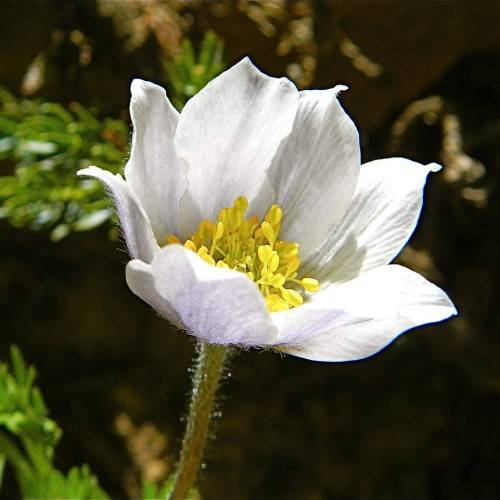
Drummond's Anemone
Anemone drummondii
Watering:
Frequent
Hardiness Zone:
Sun:
full sun,part shade
Growth Rate:
Low
Drought Tolerant:
Yes
Salt Tolerant:
Yes
Care Level:
Medium
watering
Richardson's Anemone needs to be watered regularly during the growing season to keep its soil moist. The plant should be watered at least once a week, if the soil feels dry at the surface. The amount of water needed depends on the soil type, but usually about 1-2 inches of water per week is sufficient. During the hottest part of the summer, it is advisable to water the plant even more often. Avoid over-watering by checking the soil before watering to make sure it is still relatively dry. A moisture meter can be used to ensure that the soil is not overly wet.
sunlight
Richardson's Anemone (Anemonastrum richardsonii) prefers bright, indirect sunlight,with direct exposure in the morning or late afternoon. This plants thrives in a position that gets 4-6 hours of full sun every day. If the plant is kept in very shady conditions, its growth will be significantly reduced. As a general rule, the more sunshine the better, as long as the light levels are not too intense. To ensure the best possible exposure to sunlight, rotate the pot occasionally to prevent the plant from leaning towards the sun.
pruning
Richardson's Anemone (Anemonastrum richardsonii) can be trimmed back as soon as the foliage dies off, typically at the beginning of autumn. Pruning Richardson's Anemone (Anemonastrum richardsonii) can help minimize its size and keep it looking tidy. The plant should be thinned by cutting back the long, woody shoots to the ground. Doing this will promote the growth of new, bushier shoots. It is important not to trim too aggressively, as this can encourage more leafy growth and make the plant leggy. To help promote vigorous growth, the Richardson's Anemone (Anemonastrum richardsonii) can be lightly pruned during the growing season. Deadheading spent flowers and trimming spindly shoots will help maintain the plant's shape. Pruning should be done after blooming is finished and it is not necessary to prune heavily. It is important to make sure that cutting tools are sharp when pruning Richardson's Anemone (Anemonastrum richardsonii), as this will reduce stress on the plant.
